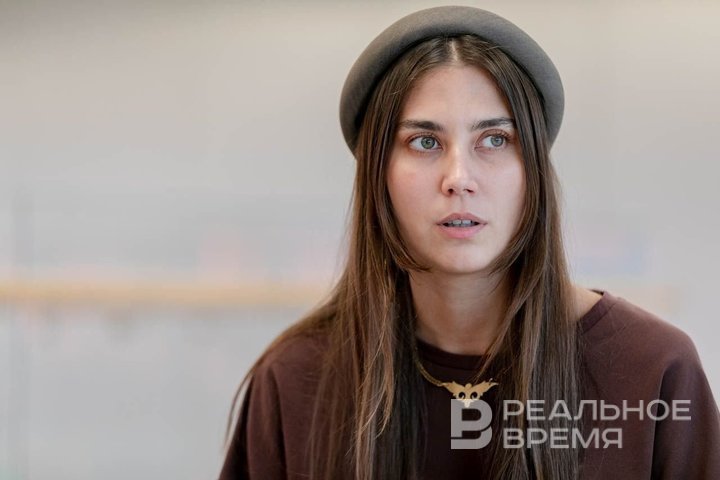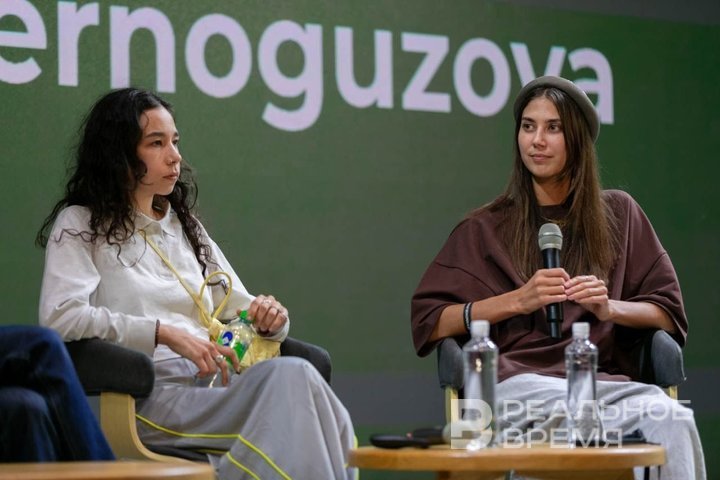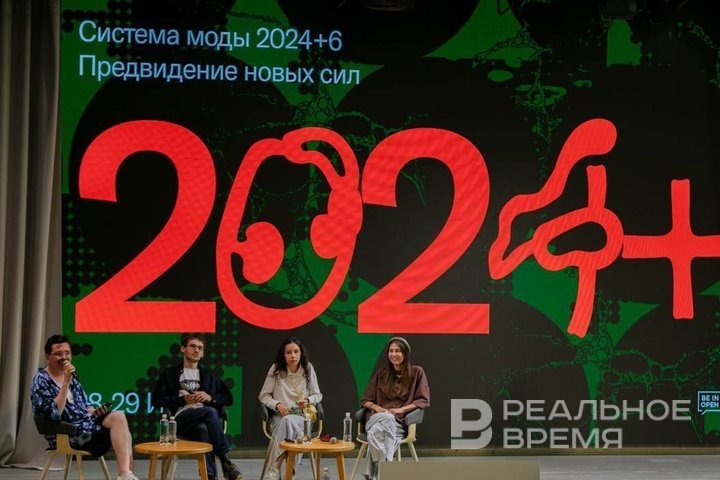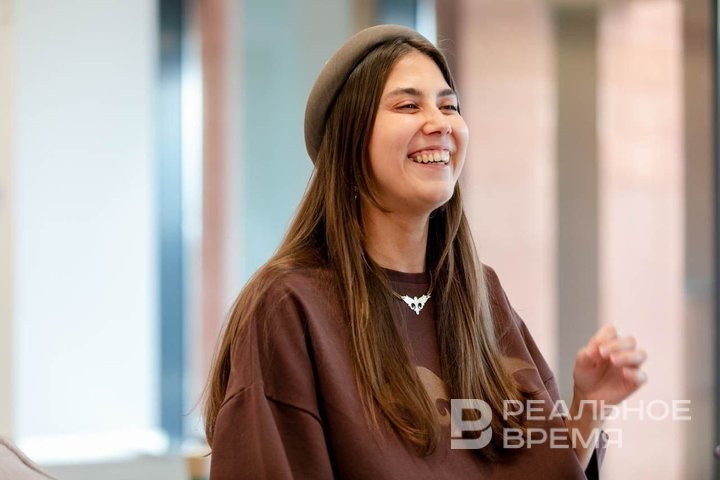Tatyana Chernoguzova: ‘We live in the era of Tatar Renaissance’
The designer from Kazan is looking for a visual Tatar cultural code

“Many brands work with the theme of national cultural code. I call it the Tatar Renaissance — the revival of Tatar culture," says young Kazan fashion designer Tatyana Chernoguzova, simultaneously revealing her own mission — to seek a new path of development through the study of the history of the people and their art. Within the framework of the Fashion System 2024+6: Foreseeing New Forces forum in Kazan, the famous artist and founder of the Your yool brand told Realnoe Vremya that she positions her project as a visual study of national identity in the language of art and fashion. What does the concept of “glocal” mean and how modern fashionistas replace the traditional tubeteika — details in the material.
Glocal project
Tanya Chernoguzova calls her project glocal — this is a combination of the concepts of “global” and “local”, which can be traced both in the very concept of the Your yool brand, and in its name, which combined the word “Your” and “yool” (“yul” from Tatar — “way, road”).
“At the junction of the concepts of 'global' and 'local', there lies my interest in research: how, talking about my personal experience, talking about local culture — in this case Tatarstan, to exist in a huge globalisation and the trend towards unification of everything through the Internet and travelling. How we can create something new and how these two parts will interact in this new one. In general, “glocal” is a sociological concept. With globalisation, it would seem that everything should mix, but in reality, on the contrary, such a phenomenon occurs that local events and features begin to stand out, people begin to remember their dialects, turn to some of their traditions just against the background of that very globalisation. I think this is a very interesting phenomenon that I work in.
“Born in Tatarstan, open to the world," the designer declares in one of her slogans. She sees her mission in looking for a new way to develop the modern national visual code through the study of the history of the people and their art, to reveal new facets of culture to the world around them through combining experience, media projects and collaborations.

Tatiana calls her project a visual study. She is a fashion designer by education. This year she has graduated from the Faculty of Design of the Department of Light Industry of the KHTI and remembers how she chose this field of study several years ago:
“It was very unpopular then. We were all promised hemming curtains. For 7 years I studied part-time. I didn't like all the disciplines. I went there to paint and study the experience of world designers. Besides, I graduated from art school. My first and last hired job is a fashion magazine. I worked there for 6 years and worked my way up from assistant to editor-in-chief. My main occupation was visual design, stylisation of filming. I have been doing fashion for more than 13 years — this is my “medium”. It is understandable and interesting to me.
“Tolerance and acceptance is the environment I grew up in”
The young woman, originally from Zelenodolsk, when asked about her nationality, replies that she is “Tatarstani”. Her maternal grandfather is a Tatar, her mother is half Tatar, half Russian. The father is Russian, but there are representatives of other nationalities in his family. “Like others, my family went through the Soviet years, when it was not customary to speak their native language. My grandfather did not speak Tatar with my mother, and everyone else in my environment did not speak their native language. They didn't teach it much at school. So it turned out that my mother knows Tatar less than I do, although I just learned Tatar at school in a Russian group.” According to the young woman, there is a mixture of nationalities in their family, so when she faced the question of her own identification, it was important for her to figure herself out:
“Of course, my territory is Tatarstan, it is a special place. From the point of view of thinking and from the point of view of cohabitation of different cultures. For example, mixed marriages are normal for us, because we have always had two dominant nationalities. You come to school, you have three Aliyahs, two Ruslans, five Mashas and so on. There were no questions about why the names were different, why someone spoke a different language. Tolerance and acceptance is the environment I grew up in. Maybe there are other examples, but I lived in a world where there is peaceful coexistence of peoples. I think this has also defined me, and through these points I try to reflect on what the Tatar cultural code is.
“Tatar is becoming fashionable”
The artist initially considered her mission to be the need to show that Tatars generally exist as a people. Now, according to Tanya Chernoguzova, this process has already been launched in Kazan.
“Many brands work with the theme of national cultural code. I call it the Tatar Renaissance — the revival of Tatar culture. Of course, the native language is also important in preserving identity. But, unfortunately, I do not know the Tatar language, I learned it only at school, but I hope to start learning it again when the opportunity arises. I see that there is a trend towards learning Tatar among young people, and it's cool. Now there are sites where they create a lot of cool things in Tatar, in the National Library for example. Cool, fashionable guys speak Tatar, and I want to know what they are talking about, that is, Tatar is becoming fashionable!

The designer considers modern young people interested in fashion to be his target audience: “They are mostly Tatars or guys living in Tatarstan, as well as a lot of Tatars who have left. Many have never even been to our republic, only their parents are from here. For them, clothes and accessories are a connection with something native. And in general, in Tatar poetry, songs, there is a longing for the native land, for the native home. I think this is also sewn into the Tatar cultural code.” At the same time, Tanya Chernoguzova admitted that she is far from mass production, so she does not create the same model in large quantities:
“I would not like to give the world more than it can use. And the mechanics of the mass market are like this. I'm not interested in that. I would not like to become a part of the clutter of the planet. For me, clothes are just a form of expression of my ideas. I don't have a goal to make 2000 black T-shirts with a bird so that as many people as possible can wear them. I am a designer, an artist, it is much more interesting for me to come up with something new in a small amount. So that people don't stumble over the same T-shirts, but see them very rarely and recognise the person who wears it as a soul mate, thinking, looking at him: “You seem to know something that I know.”
According to the young woman, for her it is also a symbol of self-identification. Through such unique objects of clothing, a person can see who thinks the same way as him, who shares his worldview.

The designer uses a bird-like pattern very often in her work. She says she borrowed this ornament from woodcarving: “Among the Tatars, the bird is a symbol of freedom and a symbol of the hearth. These are two very important things for me that I try to combine. On the one hand, it's about the house, about the local culture, about the roots. On the other hand, it is a constant look outside, with the opportunity to learn from other nations. Travel as much as possible and see what this world is like, not to lock yourself in, to recognise and get to know more people and cultures. This is also about some kind of inner freedom and about physical freedom too. Because it's important to be able to move around.” One of Chernoguzova's most notable creations is a docker tubeteika with national embroidery:
“Tubeteika is a bright attribute of the Tatar costume, but in its classic form, not many people are ready to wear it in everyday life. And this is such an interpretation. The image of the tubeteika is preserved, while in the modern global world in New York or Tokyo, a man in a docker tubeteika will be perceived simply as a modern fashionista.”
The artist combines Tatar culture with the cultures of other nationalities. She spends a lot of time in Indonesia and Bali, interacts with local craftsmen to create clothes and already creates collaborations. For example, the bone buttons for one of the collections called Yort were specially carved by Indonesian craftsmen. “The search for identity, at least in the Tatar cultural visual code, is still ongoing. We still cannot answer the question of what modern Tatar fashion is. Now, mixing with the rest of the global world, we are looking for just this identity. We don't have the opportunity to completely shut ourselves off from the rest, and that would be wrong. At the same time, we understand that we need to preserve our peculiarity — this is a new way," the young woman believes.
In the near future, Tatiana has a new collaboration to create a collection of design objects, this time it will be a collection for the home. Kazan artist Alisa Gulkanyan will act as the art director of the project. The designer considers the opening of her own space in Kazan to be the main event for herself. All this time, she did not have such a platform, so now the artist is gathering a team of like-minded people.